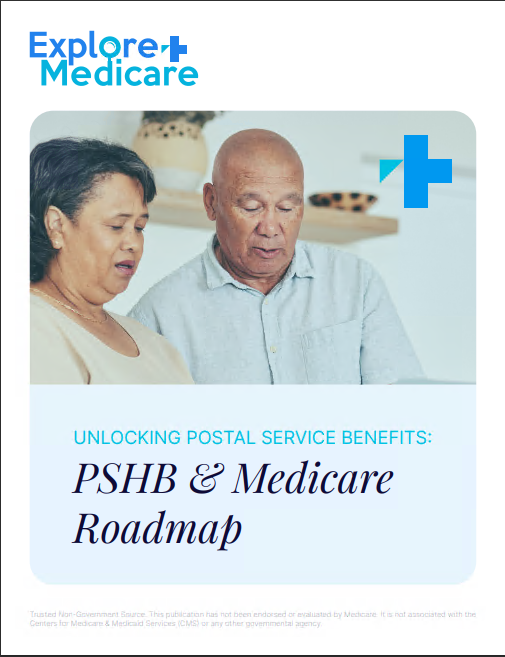Key Takeaways
-
Medicare drug coverage in 2025 can come with significant out-of-pocket costs if you don’t understand the coverage phases and how they apply to your prescriptions.
-
Planning ahead by reviewing formularies, checking preferred pharmacies, and understanding the $2,000 annual cap can help you manage your prescription expenses more effectively.
Understanding How Medicare Drug Coverage Works
Medicare offers prescription drug coverage through Part D plans and Medicare Advantage plans that include drug benefits. Each plan operates under standardized rules but has flexibility in terms of pricing, covered drugs, and pharmacy networks. As you explore your options in 2025, it’s critical to understand how drug costs are structured.
The Three Main Coverage Phases in 2025
Prescription drug coverage under Medicare Part D in 2025 is divided into three main phases:
1. Deductible Phase
-
In 2025, the maximum deductible a Part D plan can charge is $590.
-
You pay the full cost of your prescriptions until this deductible is met.
2. Initial Coverage Phase
-
After meeting the deductible, you pay a copayment or coinsurance for covered drugs.
-
Your plan covers the remainder, up to a total drug cost threshold set for the year.
3. Catastrophic Coverage Phase
-
Once your total out-of-pocket spending reaches $2,000 in 2025, you enter the catastrophic coverage phase.
-
From that point onward, you pay nothing for covered prescription drugs for the rest of the year.
This change—capping annual out-of-pocket costs at $2,000—is one of the most significant updates for 2025, eliminating what was formerly known as the “donut hole.”
What Influences Your Drug Costs
Several factors determine what you’ll pay at the pharmacy counter:
-
Drug Tiers: Plans group drugs into tiers. Lower tiers generally include generic drugs with lower costs, while higher tiers include brand-name or specialty drugs with higher prices.
-
Formulary: Each plan has a list of covered drugs. If your medication isn’t on it, you may pay full price unless you request an exception.
-
Pharmacy Network: Costs are often lower at preferred pharmacies.
-
Mail Order vs. Retail: Some plans offer lower prices when you use mail order for maintenance medications.
Changes in 2025 That Impact Your Wallet
2025 introduces meaningful improvements to Medicare drug coverage, but these come with areas to monitor carefully:
$2,000 Annual Cap on Out-of-Pocket Costs
The out-of-pocket spending limit offers substantial financial protection, especially for those who take high-cost medications. You no longer face unlimited expenses beyond a certain threshold.
Monthly Payment Option for Drug Costs
Starting in 2025, you can opt into a monthly payment program to spread drug expenses over the calendar year. This helps with budgeting but doesn’t reduce total cost.
-
You must opt into the program through your plan.
-
Missed payments may cause you to be removed from the program.
Streamlined Coverage Phases
By eliminating the donut hole and simplifying the cost-sharing structure, you can better anticipate what you’ll owe throughout the year.
Enrollment Timing Matters
You must enroll in a Medicare drug plan when you’re first eligible, typically around age 65. If you delay enrollment without other creditable drug coverage, you may face a late enrollment penalty.
When Can You Enroll?
-
Initial Enrollment Period (IEP): Starts 3 months before the month you turn 65, includes your birthday month, and ends 3 months after.
-
Annual Enrollment Period (AEP): From October 15 to December 7 each year.
-
Special Enrollment Period (SEP): If you lose other coverage or move to a new area.
Missing the IEP and not having creditable drug coverage could mean higher premiums for life due to penalties.
Tips to Keep Drug Costs Down
Even with the new protections in 2025, there are smart ways to reduce what you pay out of pocket:
-
Review Your Plan Annually: Drug prices and formularies change. Don’t assume your current plan remains the best fit.
-
Use Preferred Pharmacies: Many plans offer reduced pricing at specific pharmacies.
-
Ask About Generic Alternatives: Lower-tier drugs offer similar results at a fraction of the cost.
-
Apply for Extra Help: Low-income beneficiaries may qualify for subsidies through the Extra Help program.
Penalties and Pitfalls to Avoid
There are several missteps that can lead to higher costs or coverage gaps:
Late Enrollment Penalty
If you go without drug coverage for more than 63 consecutive days past your IEP and didn’t have other creditable coverage, you’ll pay a penalty that’s added to your premium for as long as you have Part D.
Choosing a Plan Without Reviewing the Formulary
A plan that looks affordable may not cover the specific medications you take. Always confirm your prescriptions are covered before enrolling.
Ignoring the Pharmacy Network
Going to an out-of-network pharmacy can result in significantly higher costs—even for covered medications.
Not Tracking Annual Spending
Failing to monitor your out-of-pocket totals could cause you to miss when you enter the catastrophic coverage phase. This could lead to paying more than necessary.
What About Coverage Under Medicare Advantage?
Many Medicare Advantage plans include drug coverage. However, these plans vary significantly in terms of networks, formularies, and cost-sharing. The same rules about the $2,000 out-of-pocket cap and the new monthly payment option apply, but you’ll need to confirm the details within the specific Advantage plan.
Be cautious when choosing a Medicare Advantage plan with drug coverage. Understand how its formulary aligns with your medications, how its preferred pharmacy network operates, and what copayments apply at each phase of coverage.
Additional Benefits and Programs That May Help
In 2025, more plans are also offering value-based features to improve medication adherence and affordability. While exact options vary, some general offerings may include:
-
90-day supply discounts
-
Medication therapy management services
-
Chronic condition support programs
-
Automatic refill options
Planning for the Year Ahead
Each year, your needs may shift. It’s important to reassess your plan every fall during the Annual Enrollment Period. Costs, coverage, and formularies can all change, and what worked for you last year may no longer be ideal.
Check:
-
Is your medication still covered?
-
Have costs changed for your prescriptions?
-
Are your preferred pharmacies still in-network?
Being proactive allows you to avoid surprises and avoid costly gaps in coverage.
What You Should Know Going Forward
While 2025 offers improved affordability in Medicare drug coverage, navigating the details still requires attention and planning. Understanding the phases, knowing your plan’s formulary, and tracking spending are key to managing your drug costs efficiently.
For help with selecting or reviewing your Medicare drug plan, talk to a licensed agent listed on this website. They can help you avoid missteps and make more confident choices.









